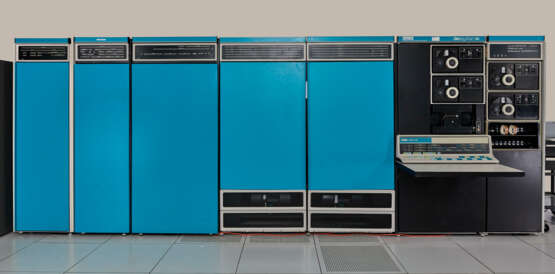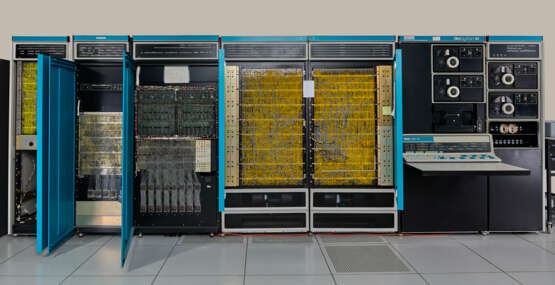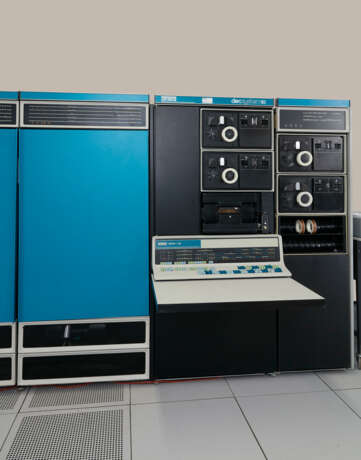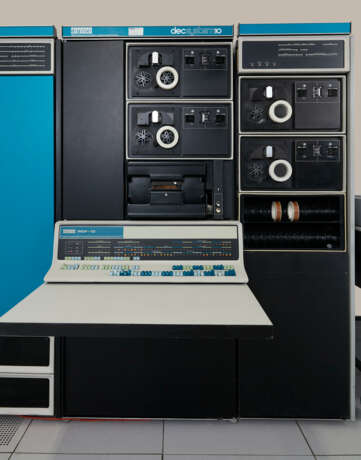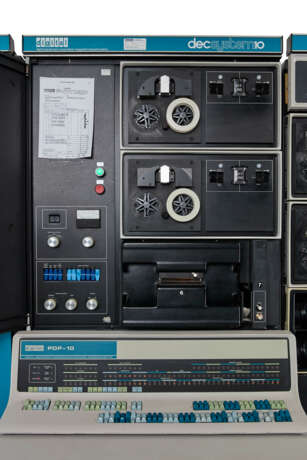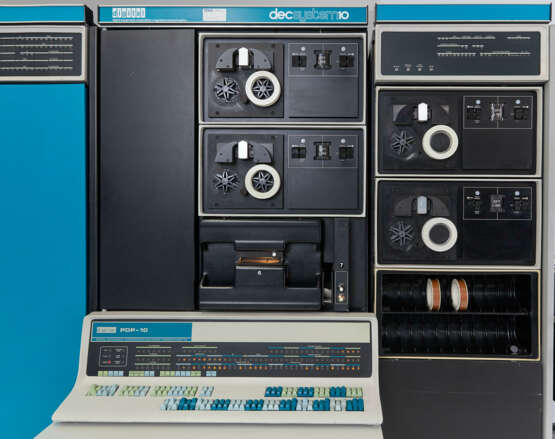ID 1291152
Lot 112 | A DEC PDP-10 KA10 MAINFRAME COMPUTER
Estimate value
$ 20 000 – 30 000
Consisting of CPU with table and control panel, tape control unit, Processor Bays 2 and 3, core memory unit MG10, RH10 data control, and, DF10-C data channel.
The KA10, introduced by Digital Equipment Corporation (DEC) in 1966, was the first in the PDP-10 series of mainframe computers. The KA10 was known for its reliability and versatility, supporting time-sharing and batch processing environments. It played a significant role in advancing computing capabilities during the 1960s and 1970s, serving as a workhorse for universities, research institutions, and government agencies. The KA10's legacy includes its influence on subsequent PDP-10 models and its impact on the development of operating systems and software tools that shaped the early days of interactive computing.
One of the most notable features of the was its implementation of the DEC’s innovative 36-bit architecture. This architecture offered a larger address space and more powerful data manipulation capabilities compared to the 18-bit and 24-bit architectures prevalent in other systems of the era. The 36-bit word length enabled the KA10 to handle more complex calculations and larger datasets with greater precision, making it well-suited for demanding applications in scientific research, real-time computing, and large-scale data processing.
The KA10 was designed with a focus on multi-programming and interactive computing, setting new standards for versatility and user accessibility. Its support for timesharing allowed multiple users to simultaneously access and utilize the computer’s resources, a revolutionary feature that significantly enhanced the productivity and efficiency of research and development environments. This capability was instrumental in advancing the field of computer science and software development, laying the groundwork for modern computing practices.
The impact of the KA10 extended beyond its technical specifications. It played a crucial role in the development of early computer networks and was instrumental in the evolution of timesharing systems. The computer’s design and functionality influenced the development of subsequent generations of computing systems and contributed to the broader advancement of computer science and information technology. Further, its legacy is also marked by its influence on early computer programming languages and operating systems. Its design philosophy and technical features inspired the creation and refinement of key software tools and languages, which in turn shaped the trajectory of software development for decades to come.
Approximate overall dimensions: 5 ft. 11 in. (1.8 m.) high, 15 ft. 10 in. (4.8 m.) wide 5 ft. 4 in. (1.6 m.) deep (incl chair).
| Auction house category: | Instruments |
|---|
| Auction house category: | Instruments |
|---|
| Address of auction |
CHRISTIE'S 20 Rockefeller Plaza 10020 New York USA | ||||||||||||||
|---|---|---|---|---|---|---|---|---|---|---|---|---|---|---|---|
| Preview |
| ||||||||||||||
| Phone | +1 212 636 2000 | ||||||||||||||
| Fax | +1 212 636 4930 | ||||||||||||||
| Conditions of purchase | Conditions of purchase | ||||||||||||||
| Shipping |
Postal service Courier service pickup by yourself | ||||||||||||||
| Payment methods |
Wire Transfer | ||||||||||||||
| Business hours | Business hours
|
